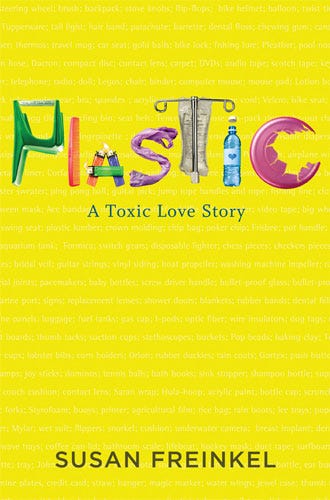Plastic: A Toxic Love Story author speaks out
After spending three years researching and writing about the history of plastics and its interaction with humans as a material, the author of Plastic: A Toxic Love Story, reached a conflicted conclusion:I became both more appreciative and more worried about plastic than I'd been before.
April 25, 2011
After spending three years researching and writing about the history of plastics and its interaction with humans as a material, the author of Plastic: A Toxic Love Story, reached a conflicted conclusion:
I became both more appreciative and more worried about plastic than I'd been before.
Susan Freinkel is making the PR rounds promoting her new book, which tells the story of plastics by focusing on eight iconic applications: the comb, the chair, the Frisbee, the IV bag, the Bic lighter, the grocery bag, the soda bottle, and the credit card (these same items are used to spell the word "plastics" on the book's cover).
Plastic: A Toxic Love Story
In this interview with Berkeleyside, Freinkel discussed what many of us in the industry learn quite quickly, how incredibly pervasive plastics are and their utility in so many everyday items. At the start of her research, Freinkel ended a "day without plastics" before it even began when she went to use the bathroom after waking up and realized the seat was made of plastic. She instead wrote down every object that she encountered that day and reached 195. I'm guessing a materials scientist could get to an even higher figure.
About the Author(s)
You May Also Like


